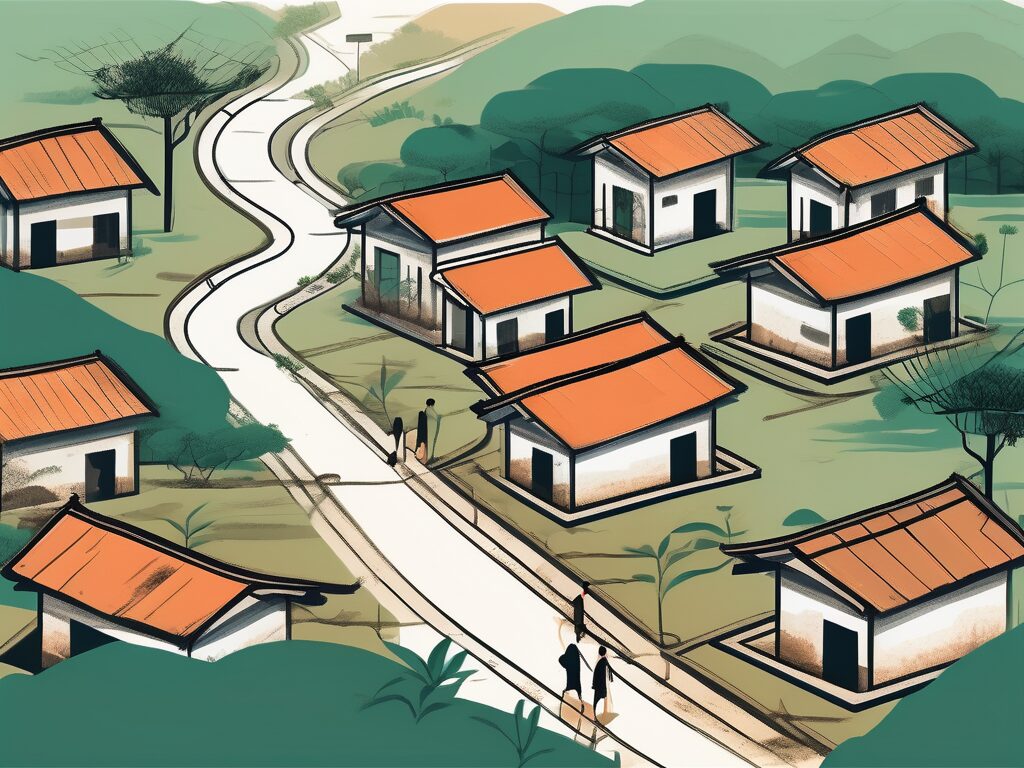Vietnam, a Southeast Asian country known for its bustling cities, rich culture, and scenic landscapes, has been grappling with the issue of low literacy rates for several years. Despite the government’s efforts to improve education, a significant proportion of the population remains illiterate. This article aims to shed light on the six key factors contributing to this issue.
1. Socio-Economic Factors
Poverty
One of the primary factors contributing to low literacy rates in Vietnam is poverty. Many families, particularly those in rural areas, struggle to make ends meet and often prioritise work over education. This means that children may be pulled out of school to contribute to the family income, thus hindering their ability to learn and develop literacy skills.
Income Inequality
Income inequality is another socio-economic factor that plays a significant role in literacy rates. In Vietnam, there is a stark contrast between the rich and the poor, with the wealthy having access to better educational resources and opportunities. This disparity often results in lower literacy rates among the less privileged sections of society.
2. Educational Infrastructure
Lack of Schools in Rural Areas
Another major factor contributing to low literacy rates in Vietnam is the lack of schools, particularly in rural areas. Many children have to travel long distances to attend school, which can be both physically exhausting and time-consuming. This often leads to high dropout rates, thereby affecting literacy levels.
Insufficient Resources
Even when schools are available, they may lack the necessary resources to provide a quality education. This includes not only physical resources such as books and classrooms, but also human resources like trained teachers. The lack of these resources can significantly impact a child’s ability to learn and develop literacy skills.
3. Cultural Factors
Gender Bias
Gender bias is a cultural factor that has a significant impact on literacy rates in Vietnam. In many families, boys are often prioritised over girls when it comes to education. This is due to traditional beliefs that men are the breadwinners and women are responsible for household chores. As a result, many girls are denied the opportunity to learn and develop literacy skills.
Language Barriers
Vietnam is a culturally diverse country with many ethnic groups, each with its own language. This diversity can pose a challenge to education, as children who speak minority languages may struggle to learn in Vietnamese, the official language of instruction in schools. This language barrier can hinder their ability to develop literacy skills.
4. Government Policies
Lack of Investment in Education
Government policies can also contribute to low literacy rates. Despite the importance of education, the Vietnamese government’s investment in this sector has been inadequate. This lack of funding has resulted in poor educational infrastructure and insufficient resources, which in turn affects literacy levels.
Ineffective Policies
Moreover, some of the government’s policies have been ineffective in addressing the issue of low literacy rates. For example, policies aimed at improving access to education have often failed to consider the quality of education. This has resulted in a system where children are enrolled in school but are not learning effectively, thus impacting their literacy skills.
5. Health Factors
Malnutrition
Health factors like malnutrition can also affect literacy rates. Many children in Vietnam suffer from malnutrition, which can hinder their cognitive development and learning ability. This can have a long-term impact on their literacy skills.
Physical Disabilities
Physical disabilities can also hinder a child’s ability to learn. In Vietnam, many children with disabilities do not have access to special education services, making it difficult for them to develop literacy skills. This lack of support for children with disabilities is a significant factor contributing to low literacy rates.
6. Technological Factors
Lack of Access to Technology
Finally, technological factors play a role in literacy rates. In today’s digital age, access to technology is crucial for learning. However, many children in Vietnam, particularly those in rural areas, do not have access to computers or the internet. This lack of access to technology can hinder their ability to learn and develop literacy skills.
Digital Divide
The digital divide, or the gap between those who have access to technology and those who do not, is another factor that affects literacy rates. This divide is particularly pronounced in Vietnam, where urban areas have much higher levels of technology access compared to rural areas. This disparity can exacerbate existing inequalities in education and literacy.
In conclusion, the issue of low literacy rates in Vietnam is multifaceted, with socio-economic, educational, cultural, governmental, health, and technological factors all playing a role. Addressing this issue will require a comprehensive approach that tackles all these factors. Only then can Vietnam hope to improve its literacy rates and provide a brighter future for its children.
Empower Educators to Elevate Literacy in Vietnam with IPGCE
Understanding the challenges of low literacy rates in Vietnam, IPGCE is committed to empowering educators to make a transformative impact. By enhancing qualifications through our International Postgraduate Certificate in Education, teachers can overcome barriers to career progression and join a global network of professionals. With a 50% increase in interview callbacks and a 45% boost in promotion rates, our program is designed to support your journey to becoming a highly qualified educator. Embrace the opportunity to deepen your professional development, adapt to global education systems, and balance your career with flexible online study options. Join the UK’s #1 Teacher Training Course today and be part of the solution in enhancing Vietnam’s literacy rates.

